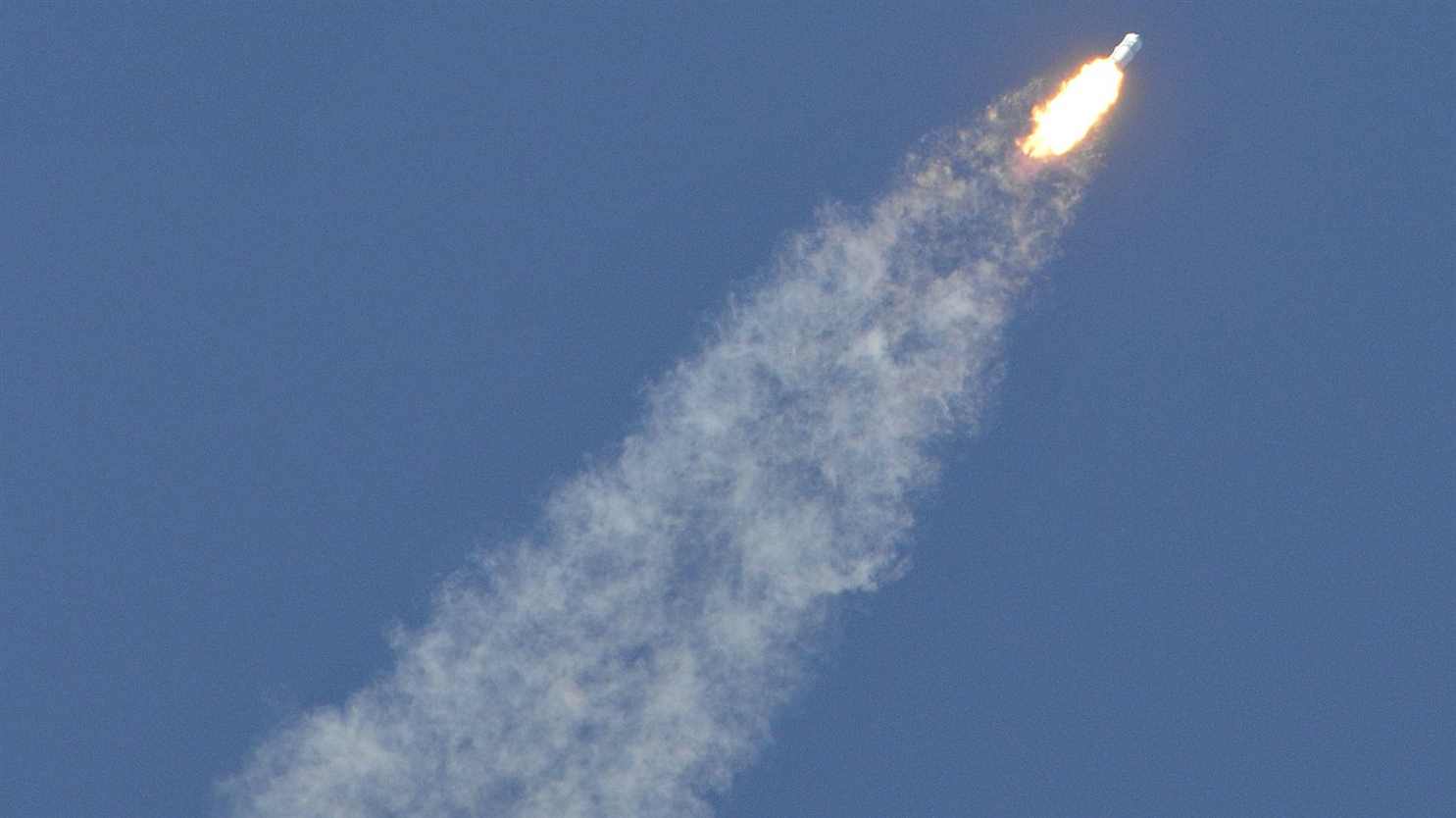The rocket was used in 2015 to put a climate observation satellite into orbit on Earth, then left abandoned in space.
Article written by
Published
Reading time : 1 min.
It wasn’t planned, but SpaceX will finally land on the Moon this year…although not in one piece. The second stage of a Falcon 9 rocket will crash on the lunar surface in March, astronomers announced on Wednesday January 26, having recalculated the trajectory of the machine left abandoned in space since its launch there. seven years. The rocket was used in 2015 to orbit a climate observation satellite on Earth, the Deep Space Climate Observatory (DSCOVR).
Since that date, the second stage of the spacecraft has been floating in the cosmos in an orbit called “chaotic” by mathematicians, because it is difficult to predict, explained astronomer Bill Gray, who was the first to realize the new trajectory. The object passed quite close to the Moon in early January, which changed its orbit, he detailed. A week later, the expert was able to observe the piece of rocket again and saw that it should crash into the far side of the Moon on March 4. After appealing to amateur astronomers to make additional observations, the data was confirmed. The craft will hit the lunar surface at more than 9,000 km/h. “I’ve been tracking space junk like this for about 15 years, and this is the first unintended lunar impact.” detected, pointed out Bill Gray.
According to astronomer Jonathan McDowell, it is possible that similar impacts have occurred in the past, without our knowing it. “There are at least 50 objects left in deep space in the 1960s, 1970s and 1980s, just left there, untracked”, he explained to AFP. Today’s sightings haven’t found them all. “It is likely that some have hit the Moon accidentally”, he judged. Next March, the explosion of this approximately four-tonne object will not be visible from Earth when it occurs. But it should cause a crater that could be observed by scientists later.
